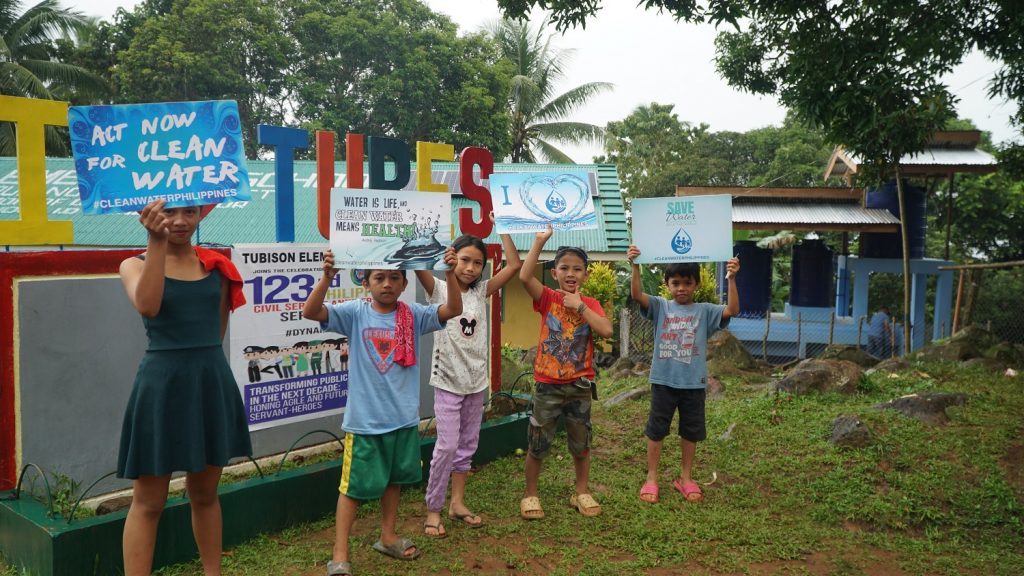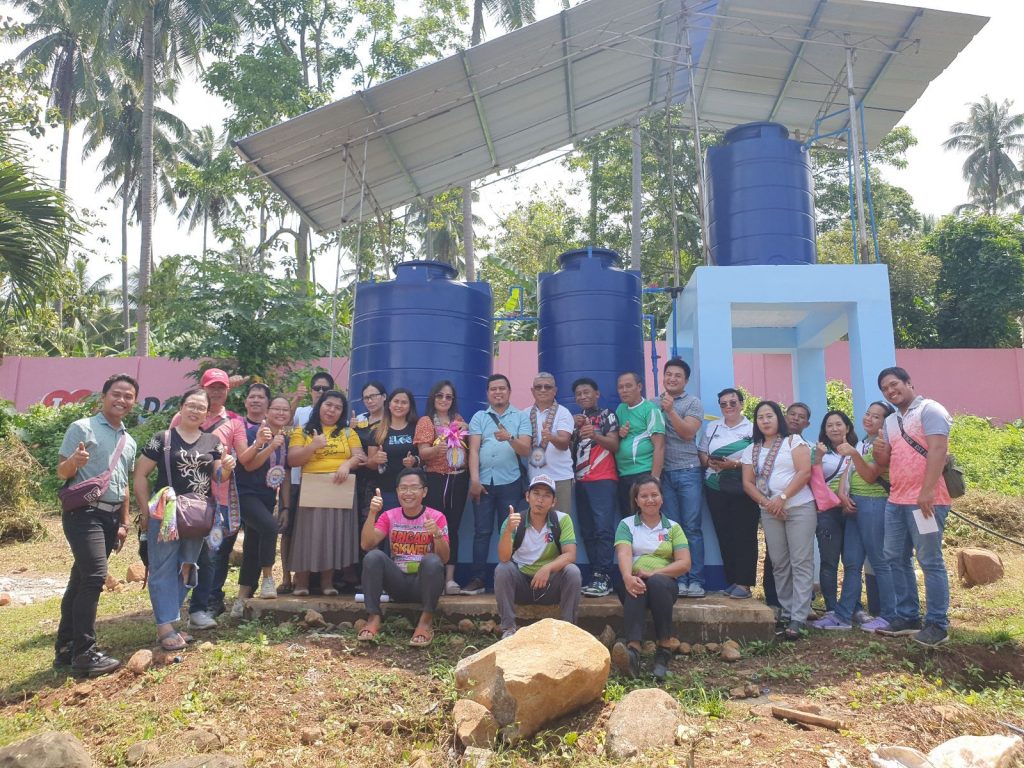
CLEAN Water International (CWI) is a non-profit organization providing access to clean, safe, and sustainable water resources for communities around the world. With operations in the USA, Canada and Philippines, CWI works closely with the community and key stakeholders to ensure that the right of every child towards clean and safe water is sustained.
CWI centers its operations on implementing its WaSH programs using its signature technologies including ceramic water filters, household biosand water filters (HBWF), village biosand water filters (VBWF), handwashing stations and eco-friendly toilets, optimizing local materials and labor. For many years, CWI has reached and served a significant number of households, schools and communities in rural areas in the Southern part of Mindanao, Philippines.
The Institute of Popular Opinion and Professional Schools of the University of Mindanao conducted a community perception survey on the impacts of the Village BioSand Water Filtration (VBSF) Technology installed by CWI in selected public schools in Sta. Cruz, Davao del Sur. The community perception survey utilized a descriptive study design employing both quantitative and qualitative approaches in data collection and analysis.
A total of 386 respondents were surveyed, of which 297 were household members and 89 school personnel. These household members were parents, grandparents, and relatives of children going to the beneficiary school. As with school personnel, these were teachers and staff. Respondents were systematically chosen in order to achieve a random effect. A 95% confidence level and 5% margin of error were used in the survey. The survey was conducted from October 8-18, 2024 covering five (5) barangays in Sta. Cruz, Davao del Sur where schools having the technology is situated. These barangays include 1) Lower Sibulan; (2) Matutungan; (3) Astorga; (4) Tibolo; and (5) Rizal. A significant majority of the households surveyed considered themselves as poor, having a combined monthly income of <10,957, with 1-2 working members.

Impact of using the VBSF technology
After using the VBSF, a noticeable improvement in the frequency of absences from work or school due to illness among family members was observed. Post-filtration, the absences dropped in frequency, with the majority (53.87%) now absent only once a month, and higher frequencies becoming rare. Also, the most frequent reason for absences which was illness or injury including flu, fever, and headaches has decreased, indicating potential health benefits related to access to clean water. On the other hand, the incidence of water-borne illnesses showed a marked reduction. This decrease suggests that the filtration technology effectively reduced exposure to contaminants responsible for water-borne illnesses, leading to fewer health-related disruptions.
Results also illustrate the change in the consumption of drinking water among respondents after the implementation of the water filtration system. Then, without the technology, 21.55% of households consumed less than 8 glasses of water daily which noticeably dropped to only 5.05%. Consequently, the percentage of people drinking eight to more than 10 glasses per day increased significantly and almost doubled among teachers. This shift suggests that access to filtered, safer water may have encouraged individuals to drink more, supporting better hydration and overall health outcomes in the community. Likewise, findings show that the majority (79.95%) consider their water source safe for drinking and cooking. However, those who were concerned about their safety chose to boil their water or simply purchase processed or bottled water.
The use of filtration technology reveals substantial improvements in the quality of water from the source. The majority of respondents observed the water as colorless, tasteless, and odorless, indicating a significant reduction in metallic and musty odors. The presence of particles also decreased, with no reports of sand (balas) and algae (lumot) found as opposed to higher frequencies before the intervention. Given the improved water quality, the spending patterns of the respondents have changed. Relatively, spending on food, medicine, and leisure increased while the allocation for education, shelter, water and energy decreased. When asked about how much savings they have made from using the water sourced from VBSF, a significant portion of households (37.04%), reported savings of PhP 200-1000, indicating a tangible financial advantage from the technology.
The survey findings further highlighted the high satisfaction levels among household members and school personnel, with seven in every ten respondents expressing they were “very satisfied” with the VBSF system and the remainder expressing satisfaction. No dissatisfaction was reported, indicating broad acceptance and success of the intervention. Overall, the VBSF technology has demonstrated its effectiveness in providing clean, safe, and sustainable drinking water, fostering healthier practices, and creating a conducive learning environment in schools.
Overall, these findings underscore the importance of sustainable water solutions in enhancing the quality of life for the beneficiaries in the barangays of Sta. Cruz, Davao del Sur. Such a role may contribute to highlighting the practical implications of adopting the water filter technology in other rural households and communities beyond.
